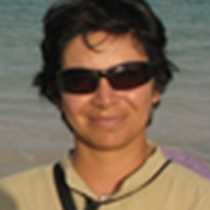Santa Cruz and North Seymour Islands
Today we had a wonderful time visiting two of the most beautiful islands in the archipelago.
Our day began early in the morning in Academy Bay on Santa Cruz Island as we headed toward the highlands to enjoy a very delicious “al fresco” breakfast at a local ranch that borders “El Chato” Tortoise Reserve.
After breakfast, we departed on a couple of different options involving different amounts of walking: a longer, brisker hike to the tortoise reserve itself, and a shorter option to a neighbouring ranch. Both had the same goal: to see these incredible giant tortoises in their natural habitat, and both were successful! Add to this some spectacular weather and amazing landscapes and we had a great morning.
The hot season in Galápagos is considered one of the best times of the year to search for them in this location, as they are busy mating and nesting, so we encounter many males and females in the area. Later on in the year, once the rainy season is over, the humongous male tortoises will migrate to the highlands where it is very green and lush all year round, and we will find them in some other locations.
We returned to the town of Puerto Ayora and after enjoying some time shopping or just exploring, we returned aboard and started our navigation towards North Seymour Island located just north of Baltra Island (that before the World War II used to be known as South Seymour).
We reached North Seymour and went ashore for an unbelievable walk around this uplifted island. We were received by many sleeping Galápagos sea lions, swallow-tailed gulls and very energetic, colourful Galápagos land iguanas. These iguanas are the descendants of a small group that were originally from Baltra Island where they later became extinct and were placed on North Seymour by Captain Allan Hancock. Thanks to him, this little population survived and now many of these iguanas have been released once more on Baltra.
Our afternoon walk was rewarded with sightings of many magnificent and great frigate birds in full courtship display, with their bright red gular pouches fully inflated. We saw many succeed and others fail, and the same behaviour was observed with blue-footed boobies all around the island.
We returned to the ship with many new highlights and memories to talk about. What a great day!
Today we had a wonderful time visiting two of the most beautiful islands in the archipelago.
Our day began early in the morning in Academy Bay on Santa Cruz Island as we headed toward the highlands to enjoy a very delicious “al fresco” breakfast at a local ranch that borders “El Chato” Tortoise Reserve.
After breakfast, we departed on a couple of different options involving different amounts of walking: a longer, brisker hike to the tortoise reserve itself, and a shorter option to a neighbouring ranch. Both had the same goal: to see these incredible giant tortoises in their natural habitat, and both were successful! Add to this some spectacular weather and amazing landscapes and we had a great morning.
The hot season in Galápagos is considered one of the best times of the year to search for them in this location, as they are busy mating and nesting, so we encounter many males and females in the area. Later on in the year, once the rainy season is over, the humongous male tortoises will migrate to the highlands where it is very green and lush all year round, and we will find them in some other locations.
We returned to the town of Puerto Ayora and after enjoying some time shopping or just exploring, we returned aboard and started our navigation towards North Seymour Island located just north of Baltra Island (that before the World War II used to be known as South Seymour).
We reached North Seymour and went ashore for an unbelievable walk around this uplifted island. We were received by many sleeping Galápagos sea lions, swallow-tailed gulls and very energetic, colourful Galápagos land iguanas. These iguanas are the descendants of a small group that were originally from Baltra Island where they later became extinct and were placed on North Seymour by Captain Allan Hancock. Thanks to him, this little population survived and now many of these iguanas have been released once more on Baltra.
Our afternoon walk was rewarded with sightings of many magnificent and great frigate birds in full courtship display, with their bright red gular pouches fully inflated. We saw many succeed and others fail, and the same behaviour was observed with blue-footed boobies all around the island.
We returned to the ship with many new highlights and memories to talk about. What a great day!




